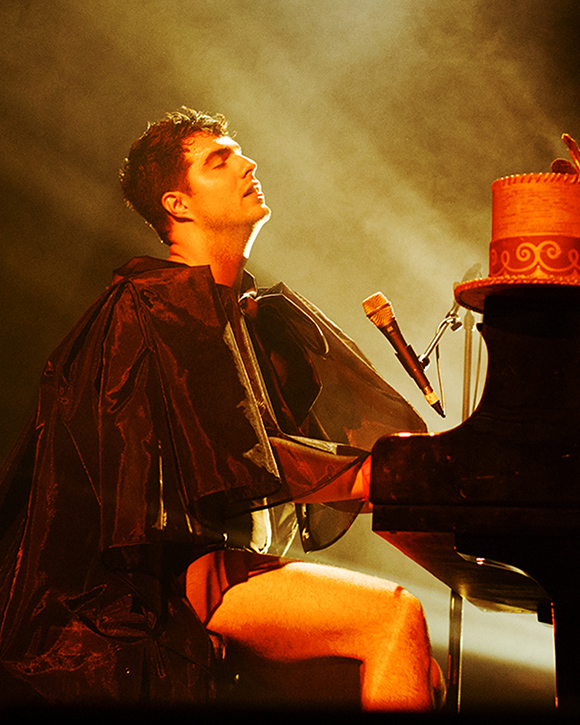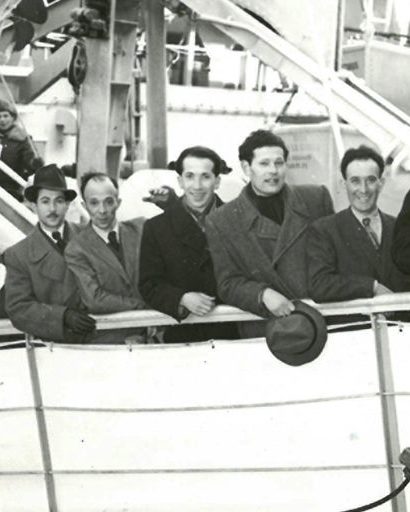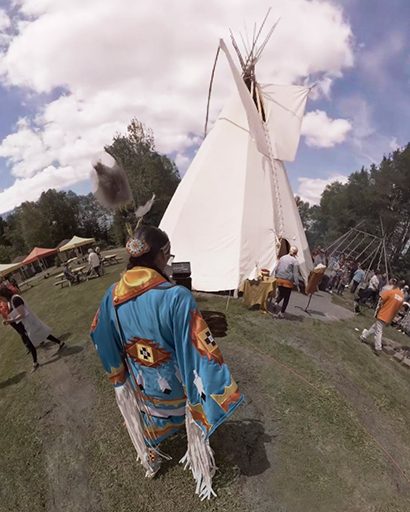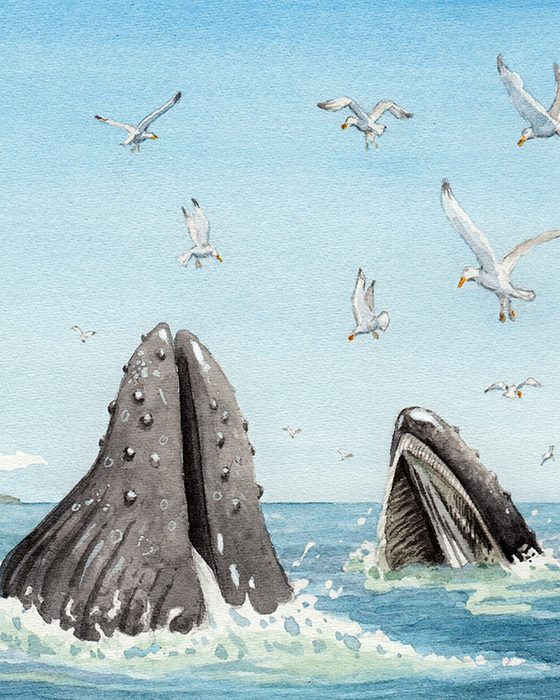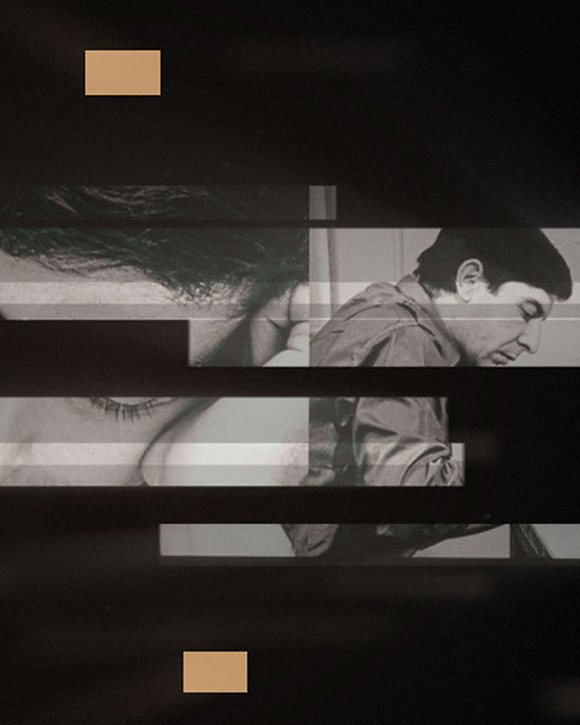Digital Projects
Apply for an investment of up to $250,000. Develop an online project from the ground up, with the support of a web development agency. Typically, Digital Projects take about 2-3 years to build to achieve your vision and meet web accessibility standards.
Call closes: December 1, 2025
Status
closed
Investment
Up to $250,000
according to the scope of the proposed project
Limit
One project at a time per applicant
Want to participate in Application Assistance to strengthen your proposal?
Register nowOverview
Managed by the Canadian Museum of History, the Digital Museums Canada (DMC) investment program helps build digital capacity in museums and heritage, cultural and Indigenous organizations across Canada, offering unique access to diverse stories and experiences.
Funding is provided for Canadian museums, and heritage, cultural or Indigenous organizations who are seeking to develop an accessible online project from the ground up, with the support of a web development agency.
Note: Organizations seeking to create an online project using DMC’s user-friendly website-building platform are invited to consider the Community Stories investment stream.
DMC is centered on digital storytelling. Proposed projects should be developed around telling a story to a specific target audience with a tailored user experience. The story should be structured according to key messages, audience take-aways or themes. Content and collections should be selected to reinforce the chosen narrative.
As such, proposed projects cannot simply be a searchable collections database or archive without a curated focus or story to tell. Institutional or corporate websites and digitization projects are not eligible.
Eligible projects must be presented in both English and French but may also incorporate other languages. Projects must meet digital accessibility standards, allowing users to access the content anywhere in the world, at no cost, and without purchased equipment (such as AR headsets).
Eligible projects include virtual exhibitions, virtual tours of heritage sites, online games, web apps, educational resources, and more.
Digital Museums Canada (DMC) is committed to advancing equity, diversity, inclusion and accessibility (EDIA) within the sector. We pledge to strengthen access to DMC funding across the country, including access for rural and northern communities. DMC recognizes the unique, rights-based relationship between First Nations, Inuit, Métis and the Government of Canada, and supports the rights of Indigenous Peoples as articulated in the Truth and Reconciliation Commission of Canada’s final report, and in the United Nations Declaration on the Rights of Indigenous Peoples.
Although DMC welcomes proposals from all eligible organizations, DMC wants to address barriers faced by specific priority groups. This consideration is reflected in program criteria, and in evaluations by the Advisory Committee, with a goal of 25 percent representation of projects from priority groups. This remains at the discretion of the Advisory Committee and is subject to the proposals received.
Priority groups are defined as organizations led by, and mandated to support, First Nations, Inuit and/or Métis; official language minority communities; people who are Deaf, deafened, or hard of hearing; persons with disabilities; 2SLGBTQI+ and gender-diverse communities; Black communities; racialized communities; or another equity-deserving group or people at the intersections of these groups.
To respect the spirit of the DMC program, proposals must describe an online project that is respectful, open, inclusive and accessible. The project must show respect for the subject matter being addressed, as well as respect for target groups and communities. Above all, the project may not be used for political, ideological or religious aims, nor for commercial or fundraising purposes. For example, projects may not contain elements aimed at promoting the sale of goods or services.
Applicant organizations with an EDIA mandate as described above are invited to fill out the questionnaire in the online application platform.
Equity, Diversity, Inclusion and Accessibility Questionnaire (sample questions)
Organizations propose a budget requesting a DMC investment of up to $250,000 CAD. Review the DMC-eligible expenses, in Proposal Questions and Tips.
Ask for the amount needed to deliver the scope of the project, up to $250,000. The Advisory Committee does not consider a lower budget request more favourably.
DMC is an investment program rather than a grant. Organizations receive support and guidance from the DMC team throughout the development and launch of their projects. Funds are released over phases, upon review and approval of deliverables.
DMC’s annual Call for Proposals opens June 15 and closes December 1.
All proposals must be submitted using the DMC online application platform. The application must be submitted before the deadline by the organization responsible for the project, also known as the “applicant.” DMC will only evaluate proposals that meet all eligibility requirements, and sign agreements with organizations that have received funding.
Note: The Canadian Museum of History reserves the right to cancel and/or reissue the Call for Proposals at any time, for any reason. If addenda are issued prior to the closing date of the Call for Proposals, a notice regarding any addenda will be posted on the DMC website.
Once the Call for Proposals has closed, an arm’s-length Advisory Committee will begin a selection process, culminating in a list of proposals recommended for investment.
All proposals are treated as confidential, in accordance with the Access to Information Act (Canada) and the Privacy Act (Canada), as well as any other applicable legislation or regulations.
At the end of the evaluation period, applicants will receive a Letter of Award or a Letter of Regret from the Canadian Museum of History. The Museum of History then enters into a legally binding agreement with each organization receiving an investment. This agreement will describe the requirements and responsibilities of the organization and the Museum of History in relation to the project receiving funding.
Feedback calls are available to unsuccessful applicants in May. Organizations must indicate their interest within 1 month of receiving their letter of regret. Feedback will be provided by video conference. No written summary of feedback or evaluation scores will be provided.
- Call for Proposals opens: June 15
- Application Assistance: September to November
- Call for Proposals closes: December 1
Following year
- Notice of award or regret: by end of April 2026
- Signature of DMC Agreement: by June 30, 2026, or sooner
- Project schedule start date (i.e., project kick-off and beginning of Phase 1): no earlier than mid-June 2026
- Signature of DMC Amendment and close of Phase 1: by January 31, 2027, or sooner
- Launch date: at maximum, DMC requires projects to launch within 4 years, (i.e., June 30, 2030), but projects can be completed in approximately 2 or 3 years.
Note: Every organization and project is different. Calculate a launch date factoring in all the tasks that need to be completed in the schedule and the complexity of the project.
Eligibility
Organizations may only submit one proposal per Call, either in the Digital Projects or Community Stories stream.
Organizations cannot be a member of the Canadian Heritage Portfolio.
To access DMC funding, eligible organizations must meet the criteria for both Primary Purpose & Mandate and Legal Status.
Primary Purpose & Mandate
DMC funding is reserved for museums, heritage, cultural or Indigenous* organizations established and operating in Canada with either a physical establishment or site, open to the public or providing programming to the public in various locations or via a website.
*Includes First Nations, Métis, and Inuit organizations whose primary focus is cultural heritage preservation.
Legal Status
DMC funding is reserved for:
Registered charities
According to the Canada Revenue Agency (CRA), a registered charity is a corporate body or trust that is registered under the Income Tax Act and is able to issue tax receipts to donors for income tax purposes.
OR
Indigenous nations, groups or organizations that operate similarly to a not-for-profit and supports Indigenous heritage and culture.
OR
Federally or provincially incorporated not-for-profits (NPO).
According to the CRA, to be considered an NPO, no part of the organization’s income may be payable to, or available for, the personal benefit of any proprietor, member or shareholder of the organization.
OR
Municipal, provincial or band heritage organizations, or university-affiliated organizations.
The organization must operate independently, at arms-length, and have a clear mandate, staff and governance structure.
At the at the time of submitting a proposal (on or before December 1), the applicant organization must have been in existence for at least 1 year with this legal status.
Eligible organizations include: museums, galleries, Indigenous cultural centres or heritage organizations, historic sites, historical societies, science centres, botanical gardens, planetariums, artist-run centres, archives, zoos, aquariums, etc.
Organizations cannot be a member of the Canadian Heritage Portfolio.
Ineligible organizations include: museums associations, professional associations, membership organizations, community centres, recreation centres, magazines and publishing organizations.
Any organization previously funded by DMC that wishes to submit a proposal in this year’s Call for Proposals must have completed any existing DMC-funded projects prior to the deadline of December 1. This means that a new proposal may not be submitted if a previously funded project is still in development.
Before investing time in a proposal, it is essential that new applicant organizations familiarize themselves with the DMC program eligibility and submit an Eligibility Application in the online application platform for review. DMC will inform applicants of their eligibility decision within approximately 10 business days.
DMC encourages organizations to complete their Eligibility Application as soon as possible. Should an organization decide to proceed with a proposal prior to an eligibility review by DMC, they agree to acknowledge that the organization may not qualify for DMC funding, and that the proposal may be rejected on the basis of eligibility.
Eligibility Verification
In the Eligibility Application organizations will be asked to provide:
- The official mandate of the organization.
- A brief justification with one concrete example from the past year, articulating how they engage in at least four of the following museum and heritage functions:
- Exhibitions
- Programming
- Research
- Collections – Collections may include artistic, scientific, cultural, traditional and historical material. They may consist of physical objects and/or intangible cultural heritage.
- Preservation
- Documentation
- Dissemination
- Proof of legal status:
- For registered charities and federally or provincially incorporated not-for-profits: their registration number.
- For Indigenous nations, groups or organizations that operate similarly to a not-for-profit and supports Indigenous heritage and culture: an explanation.
- For municipal, provincial or band heritage organization, or university-affiliated organization: an explanation.
DMC reserves the right to make its own determination on eligibility and revise the criteria for each Call for Proposals. Proof of eligibility may be requested at any time during the proposal-review process.
Eligible projects:
Projects must be accessible through a web browser, at no cost, as a complete online experience that can be viewed in any location without specialized equipment.
Some examples of eligible projects include online exhibits, virtual tours of heritage sites, immersive experiences, online games, progressive web apps (PWA), educational resources and more.
While the project can use existing content or research as a starting point, it must be conceived as a brand-new online product, with a distinct user experience, built from the ground up with a web development agency.
Ineligible projects:
- Onsite exhibitions/experiences *
- Institutional/corporate websites
- Commercial elements (i.e., e-commerce platforms)
- Online databases/archives or digitization (without a storytelling focus)
- Replicas of existing products (i.e., a tour of an existing onsite exhibition or digitization of a catalogue)
- Native mobile applications (progressive web apps are eligible)
- Projects requiring the user to purchase equipment to experience the content (i.e., AR/VR headsets) *
* The proposed project can include onsite components (i.e., QR codes) or AR/VR elements, but these will not be funded by DMC, and must be clearly differentiated as in-kind in the submitted budget.
Proposals
☐ Only proposals received before December 1 at 5 p.m. EST will be evaluated. DMC will not accept late submissions for any reason.
☐ The organization attests that the proposal responses are true and accurate to the best of their knowledge.
If awarded, the organization agrees to meet the following requirements:
Agreement
☐ Upon confirmation of funding, a DMC agreement must be signed by June 30, 2026, and an amendment signed by January 31, 2027, or sooner.
Spirit of the proposal
☐ The project must be comparable in scope and ambition to the proposal.
Spirit of the program
☐ The organization will ensure the project is respectful, open, inclusive, and accessible. The project must show respect for the subject matter being addressed, target audiences, and communities.
☐ The project may not be used for political, ideological, or religious aims, nor for commercial or fundraising purposes.
Distinct online product
☐ The project must be hosted by the organization at a dedicated URL and be based on an autonomous web architecture and data repository.
☐ The project cannot be a replica of an existing onsite or online exhibition or product (such as a digitized catalogue or duplicate of a physical exhibition). The project can use existing research or materials as a starting point, but it must be a unique, standalone product conceived for an online audience.
Languages
☐ The project must be produced and professionally translated (including a comparative edit) in both English and French. The project may also be produced in additional languages if desired.
Accessibility
☐ The project must be produced to reflect web accessibility standards according to the Web Content Accessibility Guidelines (WCAG), as well as the DMC Technical Requirements.
Launch Deadline
☐ The maximum deadline for launching is June 30, 2030, or sooner.
DMC visibility
☐ The project will acknowledge DMC under the credits or funding page using the DMC logo and the following credit line:
“Developed with the support of Digital Museums Canada, an investment program managed by the Canadian Museum of History.” [DMC Logo]
☐ The organization will acknowledge DMC in all communications materials (press releases, social media posts, etc.) with the above-mentioned credit line. The organization will seek and obtain prior approval for communications materials that mention DMC.
How to Apply
Only submissions received through the online application platform will be accepted.
- Review all DMC program guidelines and eligibility requirements.
- If desired, attend Application Assistance sessions.
- If a returning applicant: login to the existing account on the online application platform
- If a new applicant: create a profile on the online application platform.
- Complete the Eligibility Questionnaire – DMC will confirm the organization eligibility within 10 business days.*
- It is recommended that new applicant organizations receive confirmation of eligibility prior to investing time completing the proposal.
- Select one investment stream – only one proposal may be submitted per organization.
- Optionally, complete the Equity, Diversity, Inclusion and Accessibility Assessment Questionnaire.
- Complete the proposal questions.
- Prepare and upload the following supporting documentation:
- Schedule (format of your choice)
- Budget (using the 2025 budget template)
- Letter of Support (using the letter of support template or other format)
- Estimates – if applicable
- Submit your proposal by 5 p.m. EST on December 1, 2025
* Should an organization decide to proceed with a proposal prior to an eligibility review by DMC, they agree to acknowledge that the organization may not qualify for DMC funding, and that the proposal may be rejected on the basis of eligibility.
Note: Proposals submitted after the Call for Proposals deadline will not be considered. The Canadian Museum of History, which administers the Digital Museums Canada investment program, disclaims all responsibility in this regard, and will not accept any transfer of responsibility. All risks and consequences relating to an incorrect submission are the sole responsibility of the applicant.
The following Application Assistance and resources can help strengthen a proposal.
Information Sessions:
Attend a one-hour virtual presentation to
- learn about the Digital Projects investment stream;
- understand organization and project eligibility;
- find out more about the application process; and
- gain insight into key criteria that can make a difference in the success of an application.
Office Hours (bilingual)
- October 2, 2025 at 11 a.m. EDT (bilingual)
- October 9, 2025 at 12 p.m. EDT (bilingual)
- October 15, 2025 at 1 p.m. EDT (French)
- October 16, 2025 at 1 p.m. EDT (English)
- October 23, 2025 at 2 p.m. EST (bilingual)
- October 30, 2025 at 3 p.m. EST (bilingual)
Attend a one-hour, group drop-in session to ask a DMC Program Officer a specific question about your organization’s proposal.
Note: The Program Officer cannot answer subjective questions about whether your topic, subject or project would receive funding. An independent Advisory Committee selects the projects recommended for investment, so there are some limitations on the questions that can be asked.
Mentorship Chats
Selected eligible applicants attend a one-on-one, 30-minute meeting with a Program Officer to provide tailored help, answer questions, and strengthen the organization’s proposal.
This initiative is available to organizations applying to DMC for the first time and equity deserving groups as described in DMC’s Equity Statement.
Submit an expression of interest by October 7, 2025. Limited spaces are available. A draw will occur in the event there are more applicants than can be accommodated. Organizations will be notified by October 14, 2025.
Application-related questions
Stay Informed:
- Subscribe to the DMC Newsletter
Resources:
Proposal Questions & Tips
Only submissions received through the online application platform will be accepted.
Key documents:
• 2025 Digital Projects: Budget Template
• Letter of Support Template
• Digital Projects: Sample Agreement
• 2025 Digital Projects: Technical Requirements
1. Title (No points awarded)
What is the title of the online project? This can be a working title. (Maximum 20 words)
2. Subject (10 points)
What is the online project about? (Maximum 150 words)
Tips:
- Describe the subject of the online project. A more defined topic is preferable to an expansive one.
- The DMC program is centred on digital storytelling. What are the key messages? What is the big idea that the target audience(s) should take away from the experience?
- If the subject is an expansive topic or covers a large time-period, indicate the themes, people, events or places the project will focus on.
3. Target Audience (15 points)
3a. Who is the target audience for the online project? How will they benefit? (Maximum 250 words)
Tips:
- A target audience is a group of people defined by certain motivations, characteristics or behaviours. Be as specific as possible about who the project will reach and why it’s aimed at them. “All Canadians” is typically too broad a target audience and will mean the content is too generic.
- Target audiences can be defined by several factors including geographic location, age group, interests, motivations, and cultural backgrounds.
3b. Why is the target audience interested or invested in the subject? (Maximum 300 words)
Tips:
- Define specific outcomes or benefits for the audience. Some examples include informing, teaching, connecting, inspiring, surprising, delighting, provoking action, or inspiring a change in attitude.
- For curriculum connections be sure to connect to specific grades and/or subjects (e.g., British Columbia students in Grade 4, science curriculum, geology in particular). Note that curriculum competencies are vastly different by province, age and grade. Avoid generalizations such as “K-12” or “all high school students.”
3c. What aspects of the project will be evaluated with the target audience(s), and how? (Maximum 500 words)
Tips:
- Evaluation can be formal or informal, but should provide enough information to judge if a project is likely to meet its intended audience outcomes. Some examples of evaluations include focus groups, surveys, community engagement, and community consultation.
- Note that evaluation should occur before the project begins, throughout the development, and as a post-mortem. Identify when evaluations will be done, with whom, and why.
4. Relevance (20 points)
Why is the online project subject important? (Maximum 500 words)
Tips:
- Explain how the project is relevant and timely for the organization, the target audience, and the broader community. Questions to consider include:
- Why now?
- Why is the subject critical?
- Does it fill a gap in knowledge about the subject or history?
- Does it encourage community participation?
- Does it tell an untold story about a community?
- Does it offer a new perspective?
- Does it support Indigenous heritage or language preservation?
- Does it support Truth and Reconciliation, and repatriation?
- Does it support BIPOC and/or 2SLGBTQ+ stories?
- Does it support diaspora or minority language communities?
- Does it support communities facing accessibility challenges?
5. Content
Describe the media assets and/or collections used in the project and explain how these items support the storyline. (Minimum 500 words, maximum 1,000 words)
Tips:
- Media asset examples include images of artifacts, specimens, objects or artworks; archival documents; interviews with community members; audio; video; oral history recordings; other media.
- Clearly indicate if the material is pre-existing or if it will be digitized or created for the project.
- Provide quantities for each kind of content (e.g., six video interviews) or estimates if the exact amounts are unknown. The more detail the better in terms of types and quantities of content.
- Provide the sources of the content. Sources can include the organization’s collection or archives, or content from other museums, libraries, community organizations, and community members.
6. User Experience
How will the online project be organized? What experiences will the users of the digital project have? (Minimum 500 words, maximum 1,000 words)
Tips:
- Describe how the project will engage online users. Note that an online experience is very different from a physical one.
- Do certain aspects of this experience take advantage of the digital environment to present elements that cannot be realized in the physical world?
- How is the story structured? It could be:
- Chronological
- Centred around specific people, places, objects, artworks, etc.
- Thematic
- What is the anticipated organizational structure of the online project? Why will it be organized this way?
- What storytelling elements will be utilized?
- Timeline
- Hot spots
- Chapters
- Interactive maps
- Slideshow/carousel
- Audio / oral history
- Video / 360 video / parallax
- Games
- Immersive experiences
- Animation
- Quests
- User-generated content
- Describe the anticipated user journey and how the target audience will interact with the online product, including any preliminary ideas on design, navigation and flow. Describe what they will see, hear, do, think, feel, etc. as they engage with the online project.
7. Technology
Which digital tools and technologies will be used to create the user experience? (Maximum 500 words)
Tips:
- We strongly suggest that this section be completed in consultation with a web development agency. For more information on agencies, see Question 9.
- Describe the technical stack such as the content management system, plugins, etc.
- As much as possible, the response should discuss specific elements or technologies used in your project that may pose accessibility challenges and how you plan on addressing those potential barriers.
- For each element of your project, identify the tools, technologies, or platforms selected to achieve the user experience.
- Explain why each has been selected. For example, “the interactive map will be built using X technology and was chosen because X.”
8. Accessibility
How will the online project be accessible to all users, regardless of their abilities, the device they are using, and their internet bandwidth? (Maximum 350 words)
Tips:
- We strongly suggest that this section be completed in consultation with a web development agency. For more information on agencies, see Question 9.
- Ensure the technologies proposed are WCAG accessible (AA level or higher) and meet the DMC Technical Requirements. Consider users with accessibility challenges (vision, hearing, dexterity, etc.) and those with limited internet bandwidth. Online projects must be accessible using a smart phone, tablet or computer without the use of purchased, specialized equipment. The project must be accessible anywhere in Canada (not dependent on users being at a physical site).
- As much as possible, the response should discuss specific elements or technologies used in your project that may pose accessibility challenges and how you plan on addressing those potential barriers.
- Ineligible projects include augmented reality / virtual reality (requiring specialized equipment), native apps, and on-site components such as QR codes. Please note that these elements can be included in the project, but they will not be funded by DMC and should be clearly differentiated in the budget.
Overall tips for Questions # 9, 10, 11:
The project team, schedule and budget should align based on the scope of the project.
- For example, a project that features an immersive environment with animations, soundscapes, and a lot of interactive features, has different needs than a website featuring oral history videos in an Indigenous language, or a research-intensive project that uses a simpler web interface with timelines and hotspots.
- Project team (question #9): should include all the roles and responsibilities needed to produce the project, and the credentials of the person assigned.
- Schedule (question #10): should include a list of all tasks or steps, their duration and who is assigned to each.
- Budget (question #11): should include line items for all the expenses related to the production of the project (salaries, contracts, fees, etc.).
Note: Ask for the amount needed to deliver the scope of the project, up to $250,000. The Advisory Committee does not consider smaller requests more favourably.
- In the oral history project example described above:
- Project team should include the roles of community engagement coordinator, videographer, recording technician and translator.
- Schedule should include time for community consultation meetings with elders, interviews and video recordings and translation.
- Budget should include travel costs, salary costs for community coordinator, community member honorariums, fees for videographer, recording technician and video production and translation.
These unique needs are in addition to the other core roles, schedule and budget lines DMC would expect for every project (like project coordination, creative and content development, writing, web development, etc.).
- Consult “Creating Engaging Online Experiences: An Introduction for Museums and Heritage Organizations” for other helpful tips
9. Project Team
Build your project team. Itemize the roles needed, person or group assigned, and their credentials.
Tips:
- At minimum, DMC recommends that the project team include these key roles:
- Project manager *
- Educator/interpretive planner
- Curator/researcher
- Writer
- Web development agency **
- Professional translator
- Professional editor
- Other roles to consider (if applicable) include:
- Archivist/digitization specialist
- Designer/user experience (UX) designer
- Photographer
- Videographer
- Sound technician
- Interviewer
- Community coordinator (and community members or advisory council)
- Evaluator/test audience
- Curriculum consultant
- Accessibility consultant
- Marketing/communications specialists (these must be paid in-kind; not DMC-eligible expenses)
- Other technical specialists
- Include community members whose histories are represented whenever possible in the core project team.
- Ensure meaningful consultation with the community before, during and after the project launch. Explain your engagement in this work and provide a letter of support demonstrating these ongoing relationships.
- The project team can include salaried staff from the applicant organization and can be supplemented with external contractors hired with funding from DMC to fill missing roles.
- Typically, web development agencies, writers, editors, video/audio producers and translators are hired externally with DMC funds.
- If some roles are not filled yet, explain the plan to fill them.
- One person can play more than one role but be mindful of capacity.
- Whenever possible, all roles should be remunerated. Be careful not to rely too heavily on volunteers, students, or temporary staff.
* Project Manager
- This person liaises with DMC and guides the project from development to launch. They coordinate the work and ensure adherence to timeline and budget.
- DMC strongly recommends a “client-side” project manager from the lead organization. DMC funds museums, heritage, cultural and Indigenous organizations, therefore DMC’s primary contact must be represented by the organization.
** Web Development Agency
- Web development agencies provide the following work:
- Project management
- Design
- User Experience (UX)
- Content integration
- Front-end web development
- Back-end web development
- Accessibility reviews and testing
- Quality Assurance (QA)
- Post-launch web hosting and site maintenance (not a DMC-eligible expense, must be paid from other sources)
- Depending on the size and expertise of the web development agency, some of these roles may not be in-house, and may need to be hired separately.
- DMC strongly recommends hiring a web development agency external to the applicant organization.
- The agency should have web design, front-end and back-end web development experience, as well as proven knowledge of accessibility and WCAG principles. For more information, consult “How to hire a web development agency.”
Discovery interviews:
- Prior to submitting a proposal, DMC strongly recommends interviewing several potential web development agencies that could be of interest, if the organization is awarded investment. Explain their credentials in question #9 (project team) of the proposal.
- If possible ask the agency to provide guidance to question # 7 (technology) and #8 (accessibility) to help improve the proposal.
10. Schedule
Build the project schedule using the format of your choice.
Save the file as: 2025_Digital Projects_ORGANIZATION NAME_Schedule
Important Dates:
- Notice of award or regret: by end of April 2026
- Signature of DMC Agreement: by June 30, 2026, or sooner
- Schedule start date (i.e., project kick-off and beginning of Phase 1): no earlier than mid-June 2026
- Signature of DMC Amendment and close of Phase 1: by January 31, 2027, or sooner
- Launch date: at maximum, DMC requires projects to launch within 4 years, (i.e., June 30, 2030), but projects can be completed in approximately 2-3 years. However, every organization and project is different. Calculate a launch date factoring in all the tasks that need to be completed in the schedule and the complexity of the project.
Note: Every organization and project is different. Calculate a launch date factoring in all the tasks that need to be completed in the schedule and the complexity of the project.
Tips:
In the schedule, itemize in detail all the steps involved, from project kick-off to launch.
- For each step or task:
- Indicate the project team member that is responsible and the duration.
- Indicate tasks that are dependent on each other or can take place concurrently.
Ensure the schedule reflects the DMC process:
- Include the 5 DMC Phases (Phase 1: Production plan, Phase 2: User experience approach: content, design and technical, Phase 3: Preliminary version, Phase 4: Final version – one language, Phase 5: Final version in all languages)
- Include the DMC deliverables associated with each phase.
- Include the lead time for DMC deliverable review (10 business days in Phase 1, and 20 business days in other phases). Plan for 2 review cycles at Phases 2-5 as well as time to make the revisions recommended by DMC.
Apart from the DMC deliverables and phases, consider when other critical preparatory work is being done to advance the project. Include other tasks in the schedule such as:
- Content development
- Research
- Curation
- Education/interpretive planning
- Design
- Selection of existing content, media assets, or collections
- Creation of new content, i.e., digitization, photography, video, recordings, interviews, etc.
- Loan or image requests from other collections
- Image permissions or copyright clearances
- Production of immersive/interactive experiences
- Texts (body text and alternative texts, closed captions, and transcriptions)
- Writing (in original language)
- Professional editing (in original language)
- Professional translation (into 2nd language)
- Professional editing of translation
- Comparative edit (to review the equivalency of the translation in the 2nd language)
- Community consultation (include time before, during and after launch to ensure the community is engaged in the development of the project)
- Formative evaluation/user testing (recommended at Phase 2, required at Phase 3)
- Web development
- User Experience (UX) design
- Wireframes and prototypes
- Front-end web development
- Back-end web development
- Quality Assurance (QA)
- Accessibility testing
- Domain name set-up and web hosting
- Google Analytics set-up
- Search Engine Optimization (SEO)
- Project Launch
- Promotion/communication
11. Budget
Build a budget outlining the overall project cost, including:
- DMC investment request
and highly recommended,
- lead organizations contributions (in-kind or financial)
and optionally,
- other sources (i.e., other partners or funders).
The budget must be completed using the 2025 Digital Projects budget template.
Budget template instructions:
- Save the file as: 2025_Digital Projects_ORGANIZATION NAME_Budget
- Use the “DMC” column for the amount being requested from DMC, for DMC-eligible expenses, up to maximum of $250,000.00 CAD.
- Use the “lead organization” column for the lead organization’s contributions (financial or in-kind).
- Optionally, use the “other sources” column for any other confirmed partners or funders who will contribute.
- First, select the “category” in the drop-down list. Second, choose the “expense”. Indicate “other” if the item is not listed.
- If the item selected is not eligible for DMC-investment the cells will be greyed out. Indicate the cost under “lead organization” or “other sources” instead.
- In the “description” column, provide an explanation, basis of calculation or rates.
- Use real numbers and upload quotations with the application under Letters of Support whenever possible. Avoid “guestimates” and large sums without justifications (i.e., “web development at 100k”, or “content development at 50k”) instead provide details itemizing the tasks or expenses related to each amount.
DMC-eligible expenses must be directly related to the production of the online project.
Project Management
- Project manager
- Administrative support
Content Development and media assets * (either existing, newly digitized, or newly created media assets such as images, videos, 3D scans, artifacts, artworks, recordings, etc.)
- Curator
- Researcher
- Interpretive planner
- Education specialist
- Designer
- Archivist/digitization specialist
- Copyright and intellectual property: rights clearance and/or fees for 5-year duration of project
- Photographer
- Videographer
- Video editor
- Sound technician
- Artist
- Animator
- Musician
* Newly created artworks and media assets must be used directly and featured in the digital project. Creators should be paid the appropriate fees for the creation and copyright of their work(s).
Technical Producers
Web development agency:
- A critical role in the project, the organization selects a web development agency as a contractor to provide the following technical work: *
- Design
- User Experience (UX)
- Front-end web development
- Back-end web development
- Accessibility reviews and testing
- Quality assurance
- Web hosting and site maintenance **
- Other specialists like immersive creators *
* Depending on the size and expertise of the web development agency, some of these roles may not be in-house, and may need to be hired separately.
** These fees are not a DMC-eligible expense.
Other Specialists
- Curriculum consultant
- Community consultant
- Community members (with honorariums)
- Evaluator
- User testers/test audience (with honorariums)
- Accessibility consultant
Travel Costs
- Travel must be directly related to research, content development or community consultation and justified in the budget and project description.
- Some costs are not eligible for investment.
- DMC-ineligible costs should still be itemized in the budget, so the full project cost is accounted for, and costs allocated in the “lead organization” or “other sources” columns.
Ineligible costs
- Taxes on all expenses, regardless of the organization’s tax status.
- Administrative costs such as office space rental, office equipment, or printing.
- Contingency provisions.
- Overhead costs.
- Website maintenance, hosting fees, search engine and domain name registration.
- All capital purchases such as: computers, hard drives, memory cards, servers, software (and licenses), cellphones (and data plans), tablets, cameras, video cameras, drones, sound recording equipment, etc.
- Equipment rental is eligible, but DMC encourages organizations to hire technical professionals whenever possible. For example, consider hiring a seasoned video production company rather than renting a video camera.
- Communications, marketing, and promotional expenses (including events, social media, analytics tracking).
- Post launch costs: such as, postmortems, post-launch user evaluations, and post-launch content updates.
Ineligible projects:
- Onsite experiences *
- Institutional/corporate websites
- Commercial elements (i.e., e-commerce platforms)
- Online databases/archives or digitization (without a storytelling focus)
- Replicas of existing products (e.g., a tour of an existing onsite exhibition or digitization of a catalogue)
- Native mobile applications (progressive web apps are eligible)
- Projects requiring the user to purchase equipment to experience the content (i.e., AR/VR headsets) *
* The proposed project can include onsite components (i.e., QR codes) or AR/VR elements, but these will not be funded by DMC, and must be clearly differentiated as in-kind in the submitted budget.
- Web development agency/technical producers: 40-60%
- Project coordination: 10-20%
- Content development, writing and media assets: 20-40%
- Other specialists and travel (details required): 5-10%
Note: Intended as a guide only, consider the complexity and nature of the project and the lead organizations’ contributions.
Word counts, translation and editing rates
- Word counts
- For digital storytelling, approximately 18,000-50,000 words is recommended for the body text of the project. However, depending on the nature of the project this can vary.
- Keep in mind that alternative texts, closed captions, and transcriptions are required and add to the word count.
- Rate guidelines (into English or French): *
- Translation: $0.25 to $0.40/word or $40 to $70/hour
- Editing: $0.10-0.20/word or $20 to $65/hour
* Rates provided are approximate and are intended to give a general idea of price only. Rates can vary across Canada, as well as for other languages, including Indigenous languages. Professional translators and editors are required (the work cannot be completed with AI services).
- In-kind contributions, partnerships and other funding can strengthen a project, but are not required.
- Some examples of in-kind contributions include:
- staff time/salaries
- marketing or communications costs (these are DMC-ineligible expenses)
- website hosting/maintenance (these are DMC-ineligible expenses)
- access to collections, use of equipment or digitization (gratis or at a reduced rate)
- funding received from another source, grant, or program
12. Letters of Support and Quotations
Tips:
- Ask partners or community members to provide a brief letter of support and upload it with the proposal. They can write their own, or use the DMC letter of support template.
- Letters are not required but are strongly recommended as they demonstrate the passion and commitment of others in realizing the project.
- Consider uploading estimates from web development agencies, translators, or other specialists here as well, to validate the numbers in the budget.
13. Promotional text
Provide a promotional blurb describing the project. (Maximum 150 words)
DMC will publish this text in the press release in the event the project is awarded.
Deliverables
Digital Projects are built over five phases and must launch within 4 years or less.
Applicants will be required to provide a deliverable for each phase: the production plan, the interpretive plan, the preliminary version, the final version in one language and the final version in both English and French.
Note: Each deliverable will be subject to at least one DMC quality assurance review cycle, which can take up to 10 working days in Phase 1 and up to 20 working days in the other phases.
Each applicant receiving funding (the “Organization”) must enter into a binding agreement with the Canadian Museum of History (the “Museum”). All parties agree to abide by Call for Proposals documentation and the entirety of this Agreement and Appendices, including:
Upon signature of this Agreement, no later than June 30, 2026, the Organization will receive an advance of 5% from the maximum investment amount for the work to be completed in the Phase 1.
The Organization clarifies the proposal submission to refine the Project. Project team members and contractors are confirmed. If applicable, critical community consultation is completed, where the consultation is necessary for the project to begin.
- Deliverables:
- Revised budget
- Revised project team
- Revised schedule – which becomes Annex A: Deliverables & Terms of Release of Funds
- Revised concept – which becomes Annex B: Project Description & Scope
- Amendment to the Agreement:
- By the end of Phase 1, the Organization will complete the Agreement annexes, amend, and duly sign the Amendment.
- Release of funds:
- Upon Amendment signature, the Organization will receive the balance of the first investment installment (25% of the total investment)
- This phase has a maximum duration of 7 months (January 31, 2027), ideally shorter.
- Deliverables:
- Interpretive plan
- Information architecture (IA)
- List of enhancements
- Written accessibility approach
- Sample texts
- Design approach
- Release of funds: 15%
- Deliverables:
- Part 1 (prior to coding): Final design with accessibility accommodations
- Part 2: User testing report, fully functional preliminary version in English or French
- Release of funds: 20%
- Deliverables:
- Final version – one language incorporating all revisions made in Phase 3
- Translation sample
- Release of funds: 15%
- Deliverables:
- Final Version in both English and French (and any additional languages) incorporating all revisions made in Phase 4
- DMC Launch Form and promotional images
- Report of expenditures
- Release of funds: Final 20%
Upon submission, DMC requires up to 10 working days in Phase 1 and up to 20 working days in the other phases to review. The approval may require multiple rounds of review cycles subject to the discretion of DMC. Plan for at least 2 cycles at each phase.
For more information, consult the sample DMC Digital Projects Agreement.
Project texts and content must meet certain technical and accessibility requirements. DMC will verify whether these requirements have been met, and will provide feedback and guidance to the organization.
Applicants must ensure that the technologies proposed are WCAG accessible (to AA level or better), and that they meet DMC Technical Requirements. Online projects must be accessible via a smartphone, tablet or computer, without a requirement for specialized equipment. The project must be accessible anywhere in Canada (e.g., not dependent on users being at a physical site).
Ineligible projects include augmented reality, virtual reality, native apps, and on-site components such as QR codes. These elements can be included in a project but will not be funded by DMC, and should be clearly differentiated in the budget.
Evaluation
Proposals are evaluated by arms-length Advisory Committees, composed of museum and digital experts from across the country. Each investment stream is evaluated by a dedicated committee.
For most calls for proposals, the number of requests greatly exceeds the available budget. As a result, all proposals received must undergo a competitive and rigorous evaluation process.
An independent Advisory Committee scores responses provided by the applicant against established evaluation criteria. Only the highest-ranking proposals (as determined by average scoring) are retained for discussion and consensus evaluation by the Advisory Committee. Typically, proposals must receive a minimum score of 70 points to be considered at the Advisory Committee meeting.
The Committee submits its recommendations to the Canadian Museum of History. The DMC team validates each project’s eligibility, schedule and budget. DMC may contact applicants to clarify details. Because the Canadian Museum of History is accountable to the public, it reserves the right to reject recommendations made by the Advisory Committee.
Total funding available for all projects received for the 2025 Call for Proposals is currently $2,200,000 CAD. DMC reserves the right to adjust this amount and allocate the funds across the streams, based on the number and/or quality of proposals received.

Denis Boudreau
An international expert in digital accessibility and inclusive leadership with over 24 years of experience in the field, Denis helps inclusive leaders connect with the missing piece in their diversity, equity, and inclusion (DEI) efforts – disability inclusion – so their organizations can go from “inclusive-ish” to truly inclusive. He specializes in supporting organizations wishing to adopt more inclusive leadership and communication practices, particularly for their workforce and clients who live with disabilities or are ageing. Offering leaders the means to extend the reach of their message to a much broader audience, he is also the author of the Amazon bestseller “The Inclusive Speaker”, published in 2023. To find out more about him, visit www.inklusiv.ca.

Mary Bradshaw
Mary Bradshaw (Settler/Scottish descent) is the Director of Visual Arts at the Yukon Arts Centre, where uplifting a greater diversity of art and communicating these stories in modern and accessible ways is at the heart of the Centre’s work. Her enthusiasm for, and training in, art education and museum studies has led to various cultural leadership and curatorial roles in northern Canada including the Yukon Prize, 2022 Arctic Arts Summit, Yukon Permanent Art Collection, 2010 Cultural Olympiad and a past member of the Sobey Art Award Curatorial Jury. She has a MA in Museum/Gallery Studies from the University of Newcastle, UK and interned at Tate Britain.

Marquis Côté
Marquis Côté is a digital strategist and entrepreneur with significant experience in business transformation, communications, marketing, and user/visitor experience (UX) and inclusive design. As Director of Digital Technologies at the Canadian Museum of History, Côté and his team are tasked with innovating, designing, developing, deploying and supporting the online and on-site digital experiences for the Canadian Museum of History, the Canadian War Museum, and the Canadian Children’s Museum. Before joining the corporation in 2014, Côté owned and operated a creative digital agency for more than 20 years, delivering digital strategies and solutions to more than 200 private and public sector clients.

Maxime Durand
Maxime Durand is a trained historian interested in transmitting memory and promoting heritage through digital arts and humanities. He has been working for Ubisoft Entertainment since 2010 where he is a World-Design Director. His main contributions has been on the best-selling videogame franchise Assassin’s Creed which has offered a unique and appealing look at History for hundreds of millions of gamers. Maxime is a co-instigator of Discovery Tour by Ubisoft, an awarded platform made for all to visit and learn history which is used by teachers across the world. He is involved in the academic and museum spheres and has contributed to many exhibition projects. In 2024-25, Maxime is also a Knowledge Exchange Fellow at the Edinburgh College of Art in Scotland.
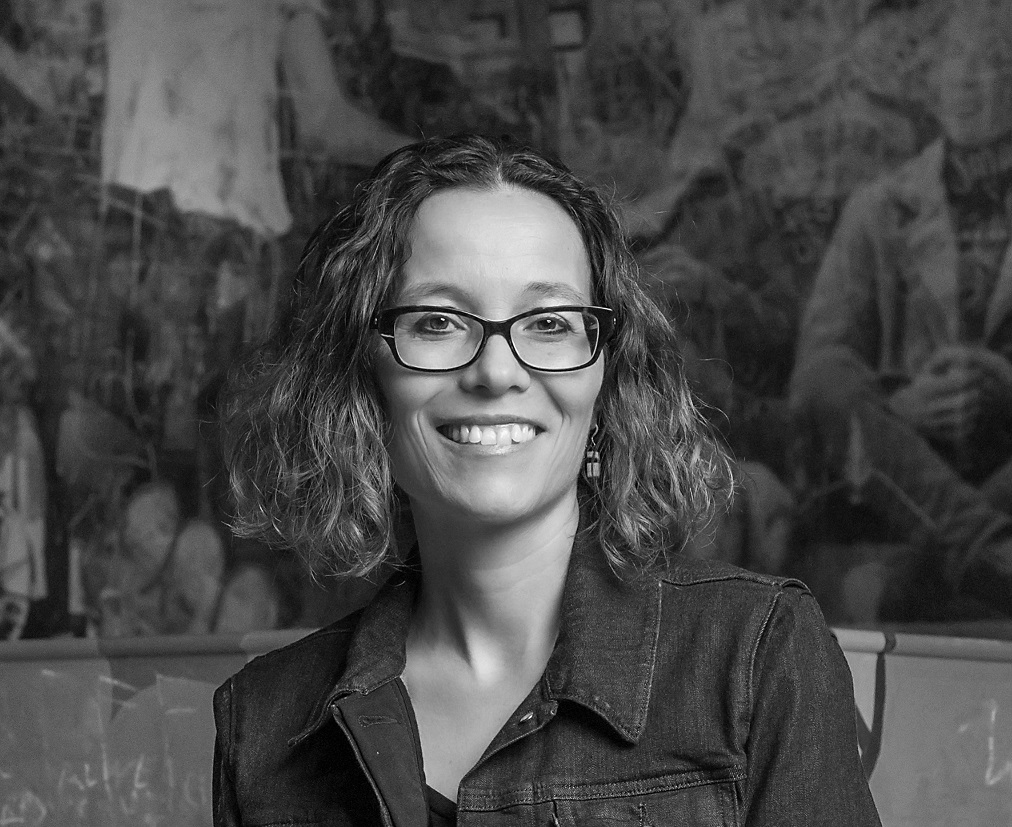
Viviane Gosselin
Viviane Gosselin (she/her/elle) is a white settler of French ancestry and Director of Collections & Exhibitions and Curator of Contemporary Culture at the Museum of Vancouver, on the unceded territories of the Musqueam, Squamish, and Tsleil-Waututh Nations. She is known for innovative participatory curatorial practices and community-driven projects that bridge scholarship, activism, and design. She is a co-director of From Catastrophe to Community: A People’s History of Climate Change, a SSHRC- funded partnership, and advances regenerative design practices through the Sustainable Arts and Green Ecosystems (SAGE) initiative. Her work centres collaboration with knowledge holders, underrepresented communities, and interdisciplinary partners to create locally grounded, globally resonant exhibitions. She is a Fellow of the Canadian Museums Association.

Danielle Klatchuk
Danielle Klatchuk (she/her) is an educator and multimedia storyteller who brings history and culture to life in classrooms, museums, art galleries, and other community spaces. Specializing in historical education and interactive learning, she has developed and executed programs, co-led exhibit planning and design, and facilitated professional development workshops and community engagement initiatives with teachers and regional partners across Alberta. Currently on the learning team at the Royal Alberta Museum, Danielle uses object-based learning, inquiry-driven methods, and historical interpretation to create dynamic experiences for school-aged visitors. She holds a BA in Anthropology and an after-degree in Education from the University of Alberta.

Marie-Hélène Raymond
Marie Hélène Raymond has worked in communications and media for over 20 years. After initially working as a cultural commentator in television and as a radio and print media contributor, she joined the team at the Musée national des beaux-arts du Québec (MNBAQ) in 2008. Given her keen interest in web strategies, she established the MNBAQ’s social media presence and has developed considerable creative digital content, such as web series and podcasts dedicated to publicizing and promoting Quebec art. Her day-to-day duties include deploying the MNBAQ’s digital dissemination strategy and coordinating several innovative projects — notably in artificial intelligence — to position the organization as a leader in the museum world.
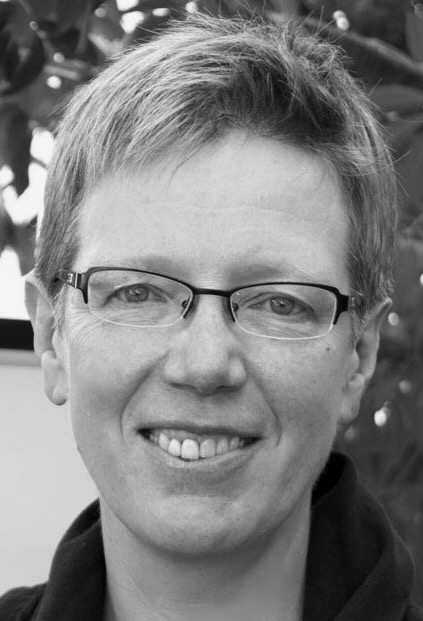
Jutta Treviranus
Jutta Treviranus is the Director of the Inclusive Design Research Centre (IDRC) and professor in the faculty of Design at OCAD University in Toronto (http://idrc.ocadu.ca ). Jutta established the IDRC in 1993 as the nexus of a growing global community that proactively works to ensure that our digitally transformed and globally connected society is designed inclusively. Dr. Treviranus also founded an innovative graduate program in inclusive design at OCAD University. Jutta is credited with developing an inclusive co-design methodology that has been adopted by large enterprise companies, as well as public sector organizations internationally. Jutta has coordinated many research networks with and by people with disabilities. She was most recently recognized for her work in equitable AI by Women in AI with the AI for Good – DEI AI Leader of the Year award. She brings over three decades of collaborative engagement with museums to create accessible museum experiences.

Zainub Verjee
A prescient and persuasive thought leader renowned for her pursuit of art as a public good, Zainub Verjee has led the way in shaping arts and culture by developing legislation and strengthening public conversations on the centrality of art in society, while shedding a bright light on the issues of race, gender, digital and labour in the arts. A significant contributor to the Canadian digital journey in the culture sector given her engagement with digital and technology issues since the 1980s, she is currently leading a pioneering digital data project for the Art Galleries and Museum sector.
A laureate of the 2020 Governor General’s Award in Visual and Media Arts, Verjee is a Senior Fellow of Massey College, McLaughlin College Fellow, and a recipient of honorary doctorates from Simon Fraser University, Victoria University, NSCAD University and OCAD University. She is the Executive Director of Galeries Ontario Galleries.
- Title, Subject, Target Audience, and Relevance (total 45 points, 3 scores)
- Subject – 10 points
- Target Audience – 15 points
- Relevance – 20 points
- Content and User Experience (20 points, 1 score)
- Technology and Accessibility (15 points, 1 score)
- Project Team, Schedule, and Budget (20 points, 1 score)
For tips on how to respond to each rated criteria, please refer to the sample proposal questions.
If DMC receives more proposals than can be funded, only the highest-ranking proposals (as determined by average scoring) will be considered for consensus evaluation by the Advisory Committee. Typically, proposals must receive a minimum score of 70 points to move on to the Advisory Committee.
DMC reserves the right to modify the number of proposals discussed and funded, subject to budget considerations. Should a smaller-than-expected number of proposals be received, the Advisory Committee may consider proposals with a score below 70 points.
It is the intent of DMC to proceed with consensus scoring for the top fifteen (15) proposals; however, DMC may adjust the number of proposals as it sees fit and considers reasonable for the investment program.
Any questions? We have answers!
Consult our FAQ.
Learn moreLooking for helpful tips and references?
Explore the toolbox before preparing your application.
Learn more